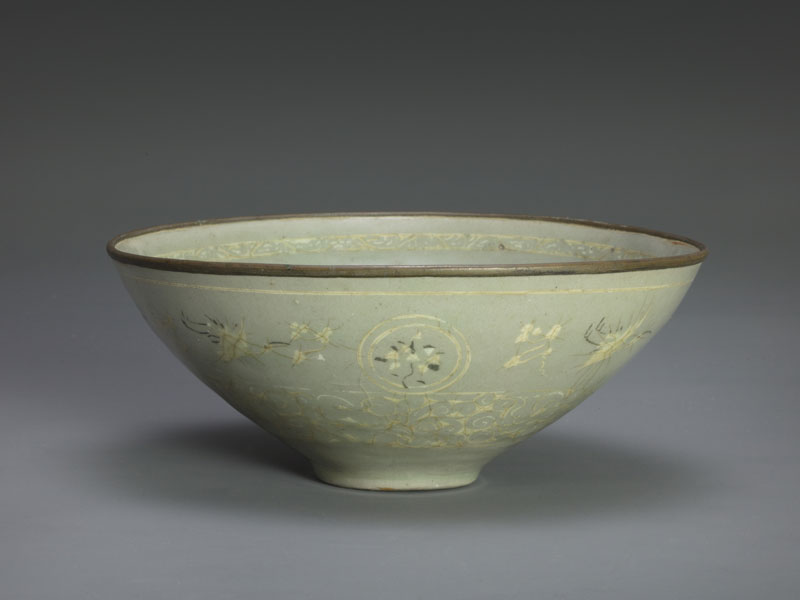There had been pottery-making in the Korean peninsula before the start of the Common Era. The development of porcelain crafts took place in the tenth century at the latest, yielding renowned works of Goryeo celadon from Gangjin and Buan Counties on the southwestern shore of the peninsula. Nurtured by the attention of the court of the Goryeo Dynasty (918-1368), Goryeo celadon in the early twelfth century shared similar qualities with Ru wares from the Northern Song Dynasty (960-1127) and, when sold to China, won the praise of 'the world's best'. After that, Korean kiln workers created skills of inlaying, introducing delicate patterns of multiple colors to the surface of a ceramic ware. As the Goryeo Dynasty declined towards its end, however, Korean ceramic culture shifted its focus to cheaper productions of pale-blue sandy wares. During the following Joseon Dynasty (1392-1897), the royals advocated white wares, celebrating their pristineness and warmth; the court also had exclusive possession of and access to the increasingly rare blue-and-white wares. This section of the exhibition demonstrates wares from the Museum's treasured collection of Goryeo celadon and Joseon blue-and-white wares, highlighting the shifting aesthetics of Korean ceramic culture through time.


